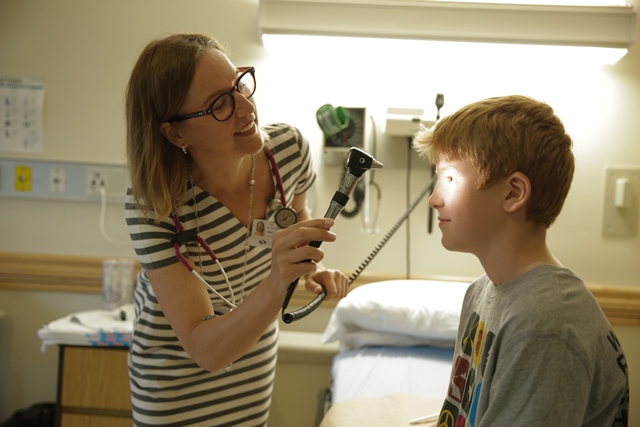Sport-related concussions are becoming more prominent among teenagers, creating a larger need for concussion education and prevention. With teenagers being eager to get back to sports, school and their social life, it is becoming increasingly important to ensure they are getting the proper treatment post-concussion and the rest necessary for the brain to recover.
The issue of concussion awareness has become even more widespread after the Ontario government passed Bill 149, Rowan’s Law. This act will create an advisory committee to establish concussion guidelines based on a coroner’s inquest of Rowan Stringer, a 17-year-old rugby player who passed away after suffering multiple concussions in a short period of time.
Southlake Regional Health Centre’s Paediatric Department, in partnership with the Emergency Department, are working to ensure that any patient who walks through their doors with a concussion are diagnosed, treated and provided education on what steps they need to take when they leave the hospital.
“We typically see the most paediatric concussions in relation to sports injuries,” notes Dr. Charmaine van Schaik, Chief of Paediatrics at Southlake Regional Health Centre, “kids are taking part in so many sports these days, of which many are contact, although most people may not expect these types of injuries when they sign their kids up to play.”
Southlake’s head injury clinic, which has been up and running for almost four years now, allows for community family physicians and hospital staff to refer paediatric patients who suffer a head injury. Southlake’s head injury clinic works in partnership with the patient and family to provide education based on the guidelines and recommendations set in place by the Canadian Paediatric Society in alignment with Parachute Canada – a National, charitable organization dedicated to preventing injuries and saving lives.
Southlake’s Director of the Maternal Child Program Lorrie Reynolds praises the clinic team for their work in helping teenagers get back to their daily lives seamlessly. “I’m really proud of the success our head-injury clinic has had with educating our patients on their concussions and teaching them how to successfully integrate back into their day to day lives,” says Reynolds.
Together, the Canadian Paediatric Association and Parachute Canada have created a set of guidelines and recommendations for parents, educators and physicians that makes a united set of tools that are easily accessible to learn more about concussions and how to treat them.
“The school boards are really good with the education element. I think the information has been more widely disseminated because there is a common approach and it’s not as challenging for any individual patient to get the care they really need on all levels,” says van Schaik.
The concussion education dialogue is one that will continue to grow as the recommendations of Bill 149 are set in place.
“I am extremely happy that concussion education is receiving more traction in the public eye and am hopeful to see a stronger awareness around paediatric concussions,” says Reynolds.


